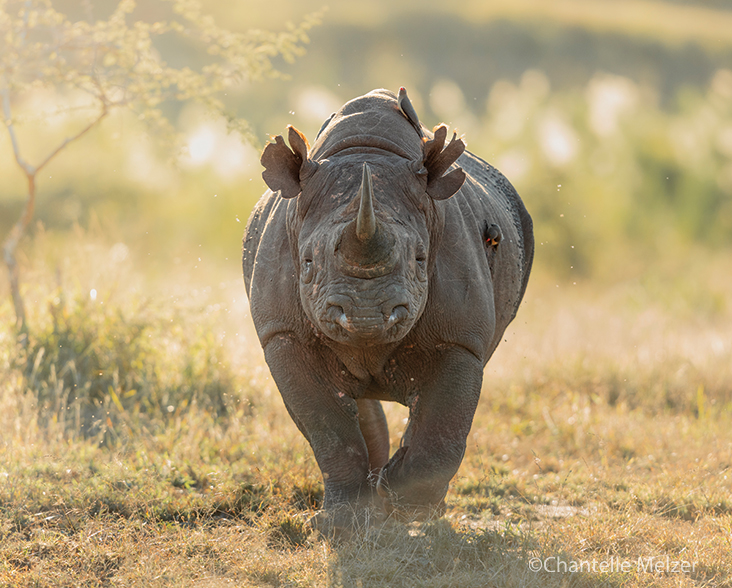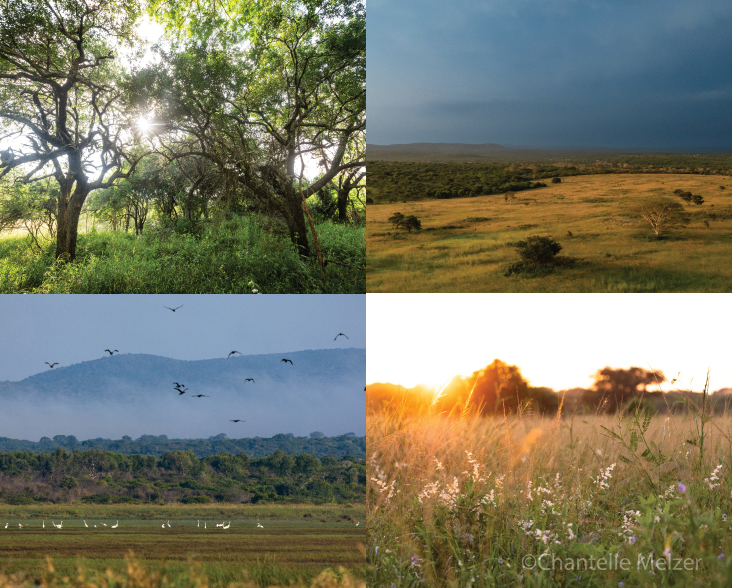



Thanks to your generous support, we have now reached our target which will enable Wild Tomorrow to purchase 148.5 ha of the 296 ha Sisonke Farm property to bridge the gap in the Greater Ukuwela Nature Reserve (GUNR).
See below for more details on the impact of your donations and the wildlife that will now benefit, not just from the protection of an important piece of land but also from the connectivity this piece of land provides to a much wider area.
We need your help to secure the missing piece of a vital corridor for some of Africa’s
most iconic and threatened wildlife.
In South Africa’s KwaZulu-Natal province, our partner Wild Tomorrow’s Greater Ukuwela Nature Reserve (GUNR) is a sanctuary for over 1,200 species. Located at the heart of a global biodiversity hotspot, the reserve is a mosaic of rare habitats and connects a network of the region’s most vibrant landscapes.
This is the story of Sisonke, the final piece in the tapestry of Ukuwela that has just now become available. Since the GUNR’s creation, Sisonke Farm has divided the reserve into east and west sections, cutting the protected areas off from each other with fences and unsafe ground. With WLT’s new appeal: Connecting Ukuwela, you can help make Sisonke part of the GUNR and restore connectivity for Giraffe (Giraffa camelopardalis), African Savanna Elephant (Loxodonta africana), Black Rhino (Diceros bicornis), Leopard (Panthera pardus), Zebra (Equus quagga), and so much more.


This spring, our fundraising efforts will enable Wild Tomorrow to purchase 148.5 ha of the 296 ha Sisonke Farm property to bridge the gap in the GUNR. Significant support has already been secured from generous supporters, but we now need your help to reach the project target of £621k. The first £50,000 donated will be matched by one of those generous supporters, meaning that your donation would be doubled and a £10 donation will be worth £20 towards this incredible project.

Safeguard Sisonke: the project will see the ecologically irreplaceable land of Sisonke incorporated into the GUNR and safeguarded to South Africa’s highest legal level under the Protected Areas Act.
Expand the GUNR: with the addition of Sisonke, the east and west sections of the GUNR will be connected to allow wildlife to move freely across the entire reserve without the need for ranger intervention. The expansion will create more space for the wildlife currently found on the reserve and for the introduction of new species, and relieve grazing pressure on the reserve’s vegetation.
Restore a wildlife corridor across South Africa: the purchase will support wildlife across the entire region by creating a landscape of connected protected areas
Once secured, the degraded land will be able to come back to life. The purchase will allow Wild Tomorrow’s dedicated team of rangers to remove the fences that currently cut Sisonke off from the wider reserve, and protect its wildlife from poachers, snares, and other human conflict. The vegetation’s recovery will be supported by eradicating invasive plant species and the removal of illegal dams will restore the natural flow of water through the land.
In the Zulu language, Ukuwela means ‘to crossover’ as it is the crossing point between the MunYaWana Game Reserve and the UNESCO World Heritage iSimangaliso Wetland Park, two larger national parks to the north and south that directly border the reserve. This placement makes the GUNR uniquely important for not only the abundant wildlife within its borders but also for legendary roaming species that define the landscapes of southern Africa.
Though the KwaZulu-Natal region was once a vast roaming ground for everything from Elephant to Antelope, its wild spaces have gradually disappeared to the ever-encroaching threat of agriculture. Today, the GUNR and similar safeguarded areas are islands of biodiversity surrounded by monoculture pineapple farms and eucalyptus plantations. Without the intervention of Wild Tomorrow, the unprotected land of Sisonke and all the known and yet-unrecorded species that may be hiding within risk falling again into farming land-use and being lost to conservation.

For species like the Critically Endangered Black Rhino and African Savanna Elephant, along with Lion (Panthera leo), and Cheetah (Acinonyx jubatus), the large-scale destruction of their natural habitat is the biggest factor driving them towards extinction. For many of us, without urgent and direct conservation action, these species could become extinct within our lifetimes, some even within the next decade. For these large, wide-ranging species, connectivity between protected areas is vital for their recovery.
By securing Sisonke, Wild Tomorrow will not only transform the GUNR into a continuous corridor but will also create an unbroken pathway from the Lebombo Mountains all the way to the Indian Ocean. This connectivity will provide safer passage across the region, more protected from poachers and further from development . It will help curb the human-wildlife conflict that occurs with carnivores like Cheetah when they are unable to reach suitable places to hunt and are forced to instead prey on livestock. The freedom of movement will allow species populations to mix and maintain crucial genetic diversity. Looking to the future, as the effects of climate change such as floods, droughts, and fires also worsen each year, the connected landscapes will help wildlife travel to safe spaces and have the chance to thrive.
Before gaining the protection of our partner Wild Tomorrow, the GUNR’s now-flourishing landscape was fast disappearing to unsustainable development. The reserve’s combination of vulnerable Subtropical Freshwater Wetland and Western Maputaland Clay Bushveld is now a thriving blanket of grasses, trees, wildflowers, and fungi.
Sisonke itself mirrors the features of the wider reserve but has suffered degradation from its past agricultural use and the game ranching that currently occupies the farm. Despite this, its habitats include a remnant of one of the world’s rarest subtropical forest types— critically threatened Dry Sand Forest. One of the most delicate and distinctive ecosystems, it grows on the remains of ancient coastal dunes, left behind by the ocean over millions of years as sea levels changed. Due to their isolation, each sand forest is often unique to itself, and Sisonke’s is home to shy species such as Red Duiker (Cephalophus natalensis), Tonga Red Squirrel (Paraxerus palliatus), and Suni (Nesotragus moschatus).
It is this patchwork of different habitats that makes the GUNR a home for a remarkable variety of species. Shrouded in the haze of the wetlands and riverbanks, Hippo (Hippopotamus amphibius) swim alongside tiny Mashona Hinged Terrapin (Pelusios rhodesianus) and Nile Crocodile (Crocodylus niloticus) while Zebra, Giraffe, and Leopard sprint through the grasslands. The reserve’s vivid flora is pollinated by the hundreds of vertebrates that cloud the warm air, both of which provide food for 416 bird species. The Endangered African Wild Dog (Lycaon pictus), also known as the Painted Dog and the largest canine in Africa, has even been seen as a pack, making their way through nearby properties despite the fences. With the purchase of Sisonke, Wild Tomorrow hopes that by removing illegal snares —one of the main threats to African Wild Dog— and taking down fences, the corridor will see more and more of this and many other species.


Community is key to conservation and Wild Tomorrow is committed to providing sustainable livelihoods to their growing team of staff. Wild Tomorrow’s rangers and Green Mambas field team, employed from the surrounding community of Mduku, are the heartbeat of the reserve.
The Green Mambas are made up of a group of local women, each of whom are the sole providers for their families, who train with Wild Tomorrow in conservation processes and running their own market businesses. Such opportunities are invaluable as the Mduku community is affected by high rates of unemployment and their work options are often otherwise limited to farm-labouring and other agricultural roles. By supporting our appeal, you will help provide more protected land for the rangers and Green Mambas to carry out their vital work.
KwaZulu-Natal is considered the heartland of the Zulu people. In fact, the region’s plains and forests were once the traditional hunting ground of the Zulu kings. As a majority Zulu organisation, Wild Tomorrow regularly consults with local tribal leaders, known as Indunas, on everything from community work to corridor planning and will continue to do so. As part of their mission, the organisation also worked with local people to build a school to engage local children with the importance of nature conservation and sustainable resource management.